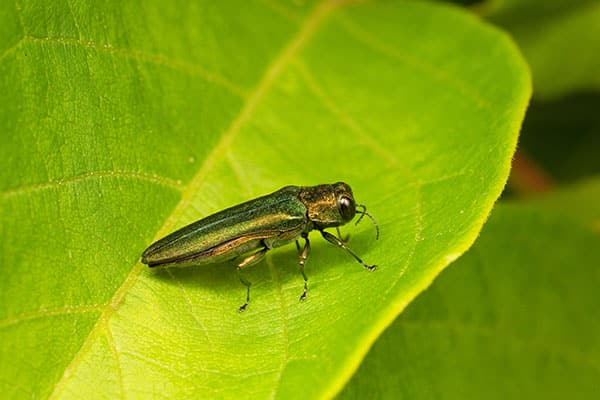How do you determine if you have a tree pest? If you notice holes in the trunk of the tree or eaten leaves, you probably have a tree pest. It can be challenging to identify which tree pest is invading your tree. Here are some common tree pests and how to identify them.
Caterpillars
Caterpillars are a common leaf-eating pest. Cankerworms are usually found on willow oaks. Tent caterpillars feed on aspens, sugar maples, oaks, and other hardwood trees. They are not considered a direct threat to the tree but can leave behind unsightly silk on the branches.
Gypsy Moths
Empty branches and bare trees can indicate that the Gypsy Moth has invaded a tree. Females are a lighter brown than the male, both have brown markings. They lay their eggs as new leaves grow in the spring. After hatching, the larvae eat the leaves. The Gypsy Moth is usually found on elm, oak, birch, and maple trees.
Aphids
Aphids are soft-bodied insects that use their piercing sucking mouthparts to feed on plant sap. They secrete a sticky substance called honeydew which can become a black fungus called soot mold. Large populations of aphids can cause wilting, yellowing, and curling of leaves.
Beetles
Beetles are small insects that have strong jaws that allow them to chew bark. They have a coffee bean shape that can be black, brown, or dark red in color. Tiny holes in the bark and sawdust are signs that beetles have invaded the tree. The tiny holes can have fungi protrusions. Because they inhabit the inner bark it is hard to treat infected trees. There are different beetles for most tree types. Removing the affected branches and limbs can stop their spread. If the main trunk of the tree or shrub is infected, then the tree must be removed.
Borers
Tree borers attack the tree tissue of bark, branches, and trunks of trees. They tunnel under the bark to feed, grow, and lay eggs. Tree borers can kill a tree within a few months or a year by destroying the nutrient and water conducting tissues. Tiny holes in the bark and sawdust are an indication that tree borers have moved in. They are common for ash and pine trees.
Scales
Tiny insects called scales have tiny, straw-like mouthparts that are used to suck the sap out of trees and shrubbery. They look like small, brown, rounded lumps with a waxy covering on leaves and plant stems. Scales can grow exponentially and cause excessive sap loss which robs the plant of essential nutrients. They are common for crape myrtle, maple, oak, and cherry laurel trees.
A tree pest can cause serious damage or kill a tree or shrubbery. It is important to remove any tree or shrubbery that can infect the other plants on your property. Call Integrity Tree Care today to help determine if the infected tree or shrubbery needs to be removed.

